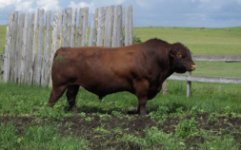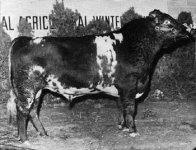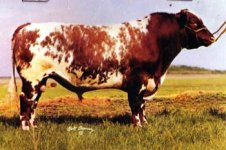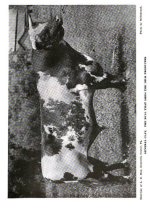I will never forget my first trip to Ontario to tour through some dual purpose Shorthorn herds. I had never seen Shorthorns from any branch of the breed like them. Every barn I walked into, I was almost in total shock. I had never seen cows like this anywhere before. They were truly dual purpose as they were milked and used for beef production as well. This was just the beginning of the era where milk production was becoming very important to these producers, so they were eager to sell off their lower producing cows in regards to milk production. I noticed that the higher the milk production the more refined the cows seemed to be. I tried to select cows that had less than 8000 lbs of milk production and I also found that most of these herds were willing to sell these cows at basically market price. I remember going to one herd, and they had sorted off 9 cows that they were taking to the local auction later that afternoon. They were some of the best cows I had ever seen at that time. They had beautiful udders, were ultra smooth made and yet had thickness and guts. I asked the owner what he would sell this set of cows for, and he said I could take them at the current market price. I purchased all 9 cows at an average price of $280. They were 5 years old or younger. Of these cows, 5 stayed in our herd for many years. 4 did not handle the move west very well and went to market. One of these cows had her last calf in our herd at age 20 and came in open at 21 years of age. Another left here at age 18. Their udders were still excellent and they were simply tough cows that could maintain themselves as good as any other cows we had. I made the trip to Ontario with the intention of trying to find one or two dual purpose cows for our herd. I remember phoning my dad after my first day of viewing these herds, and wondering what I should be doing. He told me that if I could buy good cows at market price that I should be doing it, so I ended up filling a pot with 32 females. My total cost was $12,800 after they arrived at our farm. We had a production sale the next fall and I sold the first 6 calves from these cows for $14,250. This was a long time ago, actually in 1972, so things were much different then. It cost me approximately $80 per cow to have them trucked over 1500 miles to our farm. Today that would probably be around $400 per animal. In 1976, a daughter of one of these cows topped our production sale at $4100. A bull calf from another sold for $3200. I wish every purchase I ever made had worked as well as this group did.
I will see if I can find some pictures of some of these cows and get them scanned.




